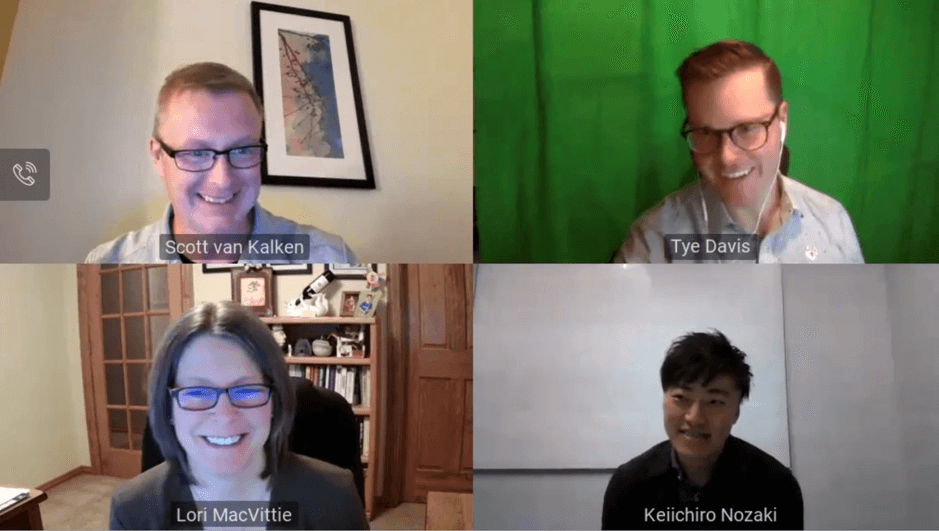BLOG
App-Modernisierung und der Marsch zur Digitalisierung
DevOps ist derzeit das Thema für Entwickler und Netzwerkexperten. Wie gut die Unternehmen darauf vorbereitet sind, habe ich im letzten Jahr in meinem Blog untersucht. Der nächste Schritt zum Verständnis der Marktlage war unsere aktuelle Webinarreihe „ Warum Anwendungsmodernisierung für die Digitalisierung wichtig ist “ in Zusammenarbeit mit Tye Davis von GitLab Inc. , einem Experten auf diesem Gebiet, und Lori MacVittie und Scott van Kalken von F5. Was hatten sie zu sagen? Hier sind meine wichtigsten Erkenntnisse aus der Diskussion:

- Definition der Anwendungsmodernisierung
Laut Lori bedeutet dies unter anderem, dass Organisationen versuchen, an der digitalen Wirtschaft teilzunehmen, indem sie entweder völlig neue Apps in der Cloud erstellen, neue Tools verwenden oder ältere Apps mit Änderungen wie der Erstellung von APIs in die Cloud bringen. Für Tye liegt der Schlüssel darin, den Einsatz des modernisierten Toolsets in Managementprozessen zu erkunden und umzusetzen. Meiner Meinung nach werden die App-Änderungen entweder durch digitale Geschäftsinitiativen ausgelöst oder nicht, einfach weil dies tatsächlich bestimmt, wie und wofür die App bereitgestellt wird und für wen.
- Der Status der CI/CD-Pipeline
Laut Tye beginnen viele Kunden mit Continuous Delivery, wechseln dann zu Agile und steigen, um die Release-Zyklen zu beschleunigen, auch auf Continuous Integration um. „In diesem CI-Teil kann es in manchen Fällen zu einem längeren Weg kommen, da es in der Organisation zu viele isolierte Teams gibt“, sagte er. Er fügte hinzu, dass die Kunden Folgendes sagen: „Ja, wir machen bereits CI“, aber in Wahrheit sprechen die Teams, die die Arbeit machen sollen, nicht miteinander. Entscheidend ist hierbei eine auf dem CI-Prozess basierende Kommunikation.
- Wichtige Ansätze/Lösungen für alle, die DevOps in Betracht ziehen
Tye verwies hier auf die Ideen des „Shift Left“ und des „Ökosystemdenkens“. „Um diesen DevOps-Ansatz umzusetzen, benötigen Sie die Zustimmung der Unternehmensführung und von oben nach unten. Außerdem müssen Sie sicherstellen, dass das Unternehmen den Agile-Ansatz verfolgt“, sagte er. „Und der Schlüssel hier ist ‚Shift Left‘.“ Ein Beispiel: Beim Abschied vom manuellen Testen bedeutet „Shifting Left“, dass dem Entwickler mehr Verantwortung für das Testen und eine frühere Validierung übertragen wird, sodass Änderungen früher vorgenommen werden können. Dadurch wird eine Ablehnung durch den Kunden nach drei Monaten Entwicklungsaufwand vermieden. Beim „Ökosystemdenken“ geht es darum, sich nicht zu isolieren, sondern stattdessen das Wissen der Community zu nutzen und an Veranstaltungen teilzunehmen.
- Was ist im Asien-Pazifik-Raum anders?
Das Webinar-Panel war sich einig, dass wir mit einem positiveren chaotischen Mix rechnen können. Dies ist nicht länderspezifisch; es bedeutet, dass die Länder sich innerhalb der Entwicklergemeinschaften gegenseitig beeinflussen. Der asiatisch-pazifische Raum ist eine Ansammlung sehr unterschiedlicher Nationen, jede mit ihren eigenen Trends und Prioritäten. Doch je mehr Länder digital werden, desto stärker werden sich Trends und Marktumgebungen annähern. Und wir werden immer häufiger erleben, dass Trends in einem Markt andere Märkte beeinflussen. Das Fazit hier: Ja, jedes Land ist anders, aber die Probleme, mit denen Entwickler in der gesamten Region zu kämpfen haben, könnten beständiger werden und die Zusammenarbeit zwischen ihnen wird wichtiger werden.
Was ist Ihre Meinung?
